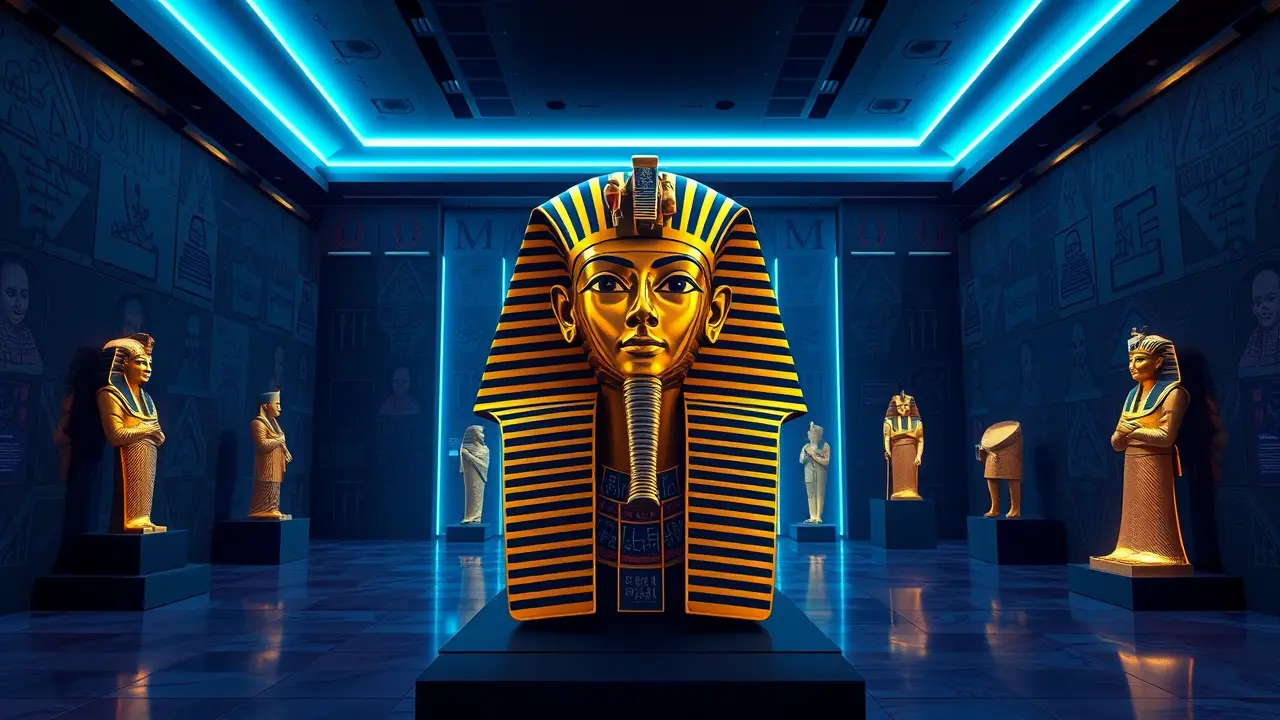
SciencearchaeologyArtifacts and Preservation
New King Tut Treasures Unveiled at Grand Egyptian Museum.
AM
Amanda Lewis
3 days ago7 min read
The Grand Egyptian Museum, a monumental $1 billion institution poised on the Giza Plateau, has finally begun its long-awaited unveiling of treasures from the tomb of Tutankhamun, presenting a collection of artifacts that have never before been seen by the public, a move that feels less like a simple museum opening and more like the climax of a century-long archaeological epic. For decades, the story of King Tut has been defined by a handful of iconic pieces—the golden death mask, the ornate throne, the guardian statues—but this new exhibition is the cinematic director's cut, the scenes left on the editing room floor that fundamentally reshape our understanding of the narrative.Stepping into the new galleries is akin to watching a beloved classic film restored with missing reels; we see the boy king not just in his final, glorious state, but in the intimate details of his life: a simple wooden bed, a collection of linen gloves, a set of gaming pieces that speak to the mundane humanity behind the divine pharaonic facade. The curation here is masterful, guiding visitors through a story that is both personal and cosmic, from the fragile, beautifully preserved floral collars placed in the tomb, their petals a silent echo of a funeral ceremony over 3,000 years past, to the intricate chariots that were symbols of both royal power and technological prowess.This isn't merely a display of gold and precious stones; it is a profound commentary on legacy, on how a pharaoh who ruled for barely a decade and was nearly erased from history by his successors has, through the chance discovery of his intact tomb, become the most famous Egyptian of all, a symbol of ancient Egypt's enduring allure. The museum itself is a character in this story, its vast, sun-drenched halls and carefully controlled environment a stark contrast to the cramped, hot Valley of the Kings where Howard Carter first uttered 'yes, wonderful things,' and it forces a reconsideration of how we preserve and present cultural heritage, moving from the dusty, object-crammed cases of the Egyptian Museum in Cairo to a narrative-driven, almost cinematic experience.Egyptologists are hailing this as a watershed moment, not just for tourism, but for scholarship, as these previously stored items offer new clues about trade routes, craftsmanship, and daily life in the 18th dynasty, providing a richer, more textured backdrop against which the short, turbulent reign of Tutankhamun can be understood. The global implications are equally significant; in an era where the repatriation of cultural artifacts is a heated international debate, the Grand Egyptian Museum stands as a powerful statement of national pride and custodianship, a place built specifically to house and celebrate Egypt's own history on its own soil, inviting the world to come and see it in its proper context. The unveiling is thus more than an exhibition; it is the final act in the story of the discovery, the beginning of a new chapter in its interpretation, and a bold declaration that the boy king's treasures, in all their newly revealed intimacy and splendor, are finally home.
#featured
#King Tut
#Grand Egyptian Museum
#ancient artifacts
#Egypt
#museum opening
#archaeology
#treasures
Stay Informed. Act Smarter.
Get weekly highlights, major headlines, and expert insights — then put your knowledge to work in our live prediction markets.
© 2025 Outpoll Service LTD. All rights reserved.